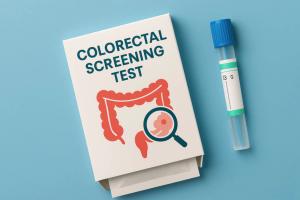Researchers Struggle to Define Quality Indicators for Hip Fracture
Hip fractures (HF) are one of the most common injuries seen in emergency departments among the elderly, but quality care measures for hip fractures are lacking. To that end, a recent report sought to identify optimal quality indicators (QI) for clinical use, but researchers found gaps that need to be addressed.
Hip fractures (HF) are one of the most common injuries seen in emergency departments among the elderly, but quality care measures for hip fractures are lacking. To that end, a recent report sought to identify optimal quality indicators (QI) for clinical use, and found gaps that need to be addressed.
After a literature search, researchers were unable to find evidence for the quality indicators that are currently in use, despite the various QIs available relating to structure, process, and outcome, they wrote. They recommended additional study on the predictive validity of QIs on outcomes that are meaningful to patients as well as healthcare administrators.Researchers defined Qs structure, process, and outcome indicators as follows:
- Structure indicators describe what is needed within a hospital or healthcare system to provide good care.
- Process indicators provide information about appropriateness of the delivered care and can be measured on patient level and are often based on guidelines.
- Outcome indicators reflect the end results of the provided care.
A good QI must meet 4 criteria: clinically relevant, scientifically acceptable, feasible, and usable, and to be scientifically acceptable, a QI has to be reliable and valid. In order to meet these criteria, a high-quality QI should undergo a well-described methodological development process, the report said.
In this review, researchers used the Appraisal of Indicators through Research and Evaluation (AIRE) instrument. However, since detailed methodological information about the indicators was lacking, the AIRE instrument could not be applied.
Sixteen publications, 9 audits, and 5 guidelines were included. In total, 97 unique QIs were found: 9 structure, 63 process, and 25 outcome indicators.
Because of the lack of methodological quality, the researchers created a list of 9 QIs that they recommend for further study. They selected these indicators if they were described in at least 2 articles and were used in at least 2 existing audits/guidelines. The 9 indicators are made up of of 1 structure indicator, 6 process indicators, and 2 outcome indicators. The list includes:
- Orthogeriatric management during admission (structure indicator, correlation with outcome not tested)
- Time to surgery (process indicator, correlated with 1-year mortality)
- Time to mobilization after surgery (process indicator, correlated with length of stay, 30-day readmission, and 30-day mortality)
- Future fracture prevention assessment (process indicator, correlated with 30-day readmission and 30-day mortality rate)
- Systematic pain assessment (process indicator, correlated with 30-day readmission and 30-day mortality rate)
- Assessment of malnutrition (process indicator, no correlation with outcome found)
- Prevention/assessment of pressure ulcer (process indicator, no correlation with outcome found)
- Mortality rate (outcome indicator)
- Return to the place of residence within a specific time frame (outcome indicator)
The researchers described these as a starting point for additional research.
Reference
Voeten SC, Krijnen P, Voeten DM, Hegeman JH, Wouters MWJM, Schipper IB. Quality indicators for hip fracture care, a systematic review. Osteoporos Int. 2018;29(9):1963-1985. https://doi.org/10.1007/s00198-018-4558-x.
Newsletter
Stay ahead of policy, cost, and value—subscribe to AJMC for expert insights at the intersection of clinical care and health economics.
Related Articles
 Insurance Coverage Improves for Same-Sex Couples, Yet Disparities Persist
Insurance Coverage Improves for Same-Sex Couples, Yet Disparities PersistSeptember 22nd 2025
 Identifying Barriers to Colorectal Cancer Screening for People With IDD
Identifying Barriers to Colorectal Cancer Screening for People With IDDSeptember 22nd 2025
 Rural-Urban Disparities in Colorectal Cancer Screening Persist
Rural-Urban Disparities in Colorectal Cancer Screening PersistSeptember 21st 2025


















































